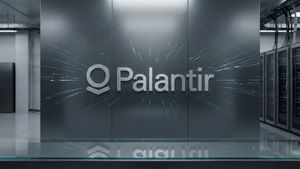Potential $1.76 Trillion in Working Capital Opportunity Revealed
The Hackett Group, Inc., (NASDAQ: HCKT) reports that for the first time in a decade, the largest publicly traded companies in the U.S. have experienced simultaneous degradation across all major working capital metrics, according to their new research. This triple threat points to a critical turning point, revealing a staggering $1.76 trillion in untapped working capital opportunity, stressing the urgency for companies to optimize and free up cash amidst ongoing economic uncertainties.
After a year of growth despite inflationary and recessionary risks, the largest U.S. companies experienced a dramatic shift in 2023. For the first time in a decade, an analysis of data from 1,000 of the largest U.S. public companies showed that all three key working capital metrics – days sales outstanding (DSO), days inventory outstanding (DIO) and days payables outstanding (DPO) – deteriorated simultaneously. DSO increased by 3% to 40.1 days and DIO saw a slight rise of 0.01 days, while DPO declined by 0.1 days, highlighting a significant shift in the financial and operational performance of the largest publicly traded companies in the country.
This presents a concerning trend for businesses because macroeconomic uncertainties and inflationary pressures are expected to persist, imposing additional external constraints on working capital. This effect is compounded by persistently higher interest rates, significantly increasing the carrying cost of money trapped in working capital compared to previous years. As a result, redoubling efforts on working capital optimization is more urgent than ever before to navigate the increasingly volatile market conditions effectively.
Equally alarming is the softening of aggregate revenue figures. Over the past decade, excluding the pandemic year, revenue has averaged a 10% year-over-year increase. However, this year has seen a stark contrast, with revenue growth remaining essentially flat at just a 0.3% increase. This trend illustrates the complex dynamic between efforts to manage inflation and the risk of economic stagnation due to high interest rates.
The widening gap between best-in-class and median companies continued to expand, driven primarily by the significant improvements of top performers rather than the degradation of median ones. Historically, the ratio of top-to-median performance has averaged around 2.95-to-1, but this year it has increased by 8% to reach a record 3.2-to-1.
“This widening gap underscores the imperative for businesses to diligently manage their financial resources to remain competitive. As the disparity grows, so does the opportunity for competitive advantage,” said Istvan Bodo, director of Strategy and Operations at The Hackett Group.
One of the most notable changes is the substantial degradation in DSO, which increased by 3% this year to reach 40.1 days, marking the first time since the pandemic began that DSO has shown degradation. It’s essential to note, however, that the gains from the previous two years more than offset this year’s degradation, resulting in DSO performance comparable to the pre-pandemic average of around 40 days. Additionally, industries with a heavy business-to-business focus lead the pack in DSO degradation, potentially signaling a leverage shift to buyers within these sectors, emphasizing the evolving dynamics of supplier-customer relationships in response to changing market conditions.
DIO saw a slight rise of 0.01 days, marking its first degradation since the pandemic. Despite this marginal increase, DIO remains significantly improved from the pandemic peak of nearly 58 days. Industries with the most significant downturn in inventory performance were those heavily dependent on energy in their cost of goods sold, reflecting potential advance buying to hedge against geopolitical uncertainties.
DPO declined by 0.1 days this year, continuing a trend of deterioration seen since the pandemic, with an overall 7% decline, particularly for industries relying on high-tech equipment – like computer chips – where the leverage is still with the suppliers given the supply constraints in that sector.
Additionally, The Hackett Group’s research identified $1.76 trillion in untapped working capital opportunity, emphasizing the need for finance executives to proactively partner with internal business partners to optimize working capital across the balance sheet. In the face of persistent macroeconomic uncertainties and inflationary pressures, the need for effective working capital management is more critical than ever. With the transformation generative artificial intelligence (Gen AI) will have on business operations, organizations must target and prioritize Gen AI capabilities to optimize the revenue and disbursement cycles, and better anticipate customer demand and inventory needs.
“Gen AI will provide new enablement opportunities that will enhance working capital management across the board,” said Shawn Townsend, director of Strategy and Operations at The Hackett Group. “Leading businesses will use Gen AI to improve cash flow forecasting accuracy, predict optimal inventories that meet ever-changing customer demand, develop more robust just-in-time sourcing demand planning and more.”
The increased carrying cost of money trapped in working capital, driven by high interest rates, underscores the necessity for companies to intensify their efforts to optimize working capital and effectively navigate volatile market conditions.
The Hackett Group’s 2024 Working Capital Survey is currently featured on CFO.com. A summary of the research findings, including detailed industry analysis and working capital improvement recommendations, is available on a complimentary basis, with registration.
About The Hackett Group
The Hackett Group, Inc. (NASDAQ: HCKT) is an IP-based, Gen AI strategic consulting and executive advisory firm that enables Digital World Class® performance. Using AI XPLR™ – our AI assessment platform – our experienced professionals guide organizations to harness the power of Gen AI to digitally transform their operations and achieve quantifiable, breakthrough results, allowing us to be key architects of their Gen AI journey.
Our expertise is grounded in unparalleled best practices insights from benchmarking the world’s leading businesses – including 97% of the Dow Jones Industrials, 89% of the Fortune 100, 70% of the DAX 40 and 55% of the FTSE 100 – and are delivered leveraging our Digital Transformation Platform, Hackett Connect™ and Quantum Leap®.
For more information on The Hackett Group, visit: https://www.thehackettgroup.com/ or email: media@thehackettgroup.com.
Trademarks
The Hackett Group, quadrant logo, Quantum Leap and Digital World Class are the registered marks of The Hackett Group.
Cautionary Statement Regarding “Forward-Looking” Statements
This release contains “forward-looking” statements within the meaning of Section 27A of the Securities Act of 1933 as amended and Section 21E of the Securities Exchange Act of 1934, as amended. Statements including without limitation, words such as “expects,” “anticipates,” “intends,” “plans,” “believes,” seeks,” “estimates,” or other similar phrases or variations of such words or similar expressions indicating, present or future anticipated or expected occurrences or outcomes are intended to identify such forward-looking statements. Forward-looking statements are not statements of historical fact and involve known and unknown risks, uncertainties and other factors that may cause the Company’s actual results, performance or achievements to be materially different from the results, performance or achievements expressed or implied by the forward-looking statements. Factors that may impact such forward-looking statements include without limitation, the ability of The Hackett Group to effectively market its digital transformation, artificial intelligence, and other consulting services, competition from other consulting and technology companies that may have or develop in the future, similar offerings, the commercial viability of The Hackett Group and its services as well as other risk detailed in The Hackett Group’s reports filed with the United States Securities and Exchange Commission. The Hackett Group does not undertake any duty to update this release or any forward-looking statements contained herein.
View source version on businesswire.com: https://www.businesswire.com/news/home/20240829955745/en/





